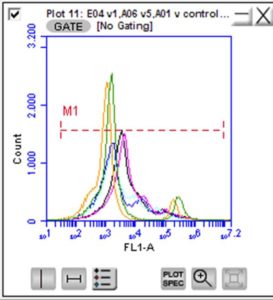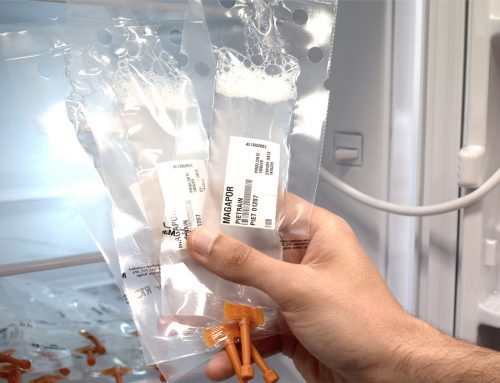As we explained last week in our entry, flow cytometry has become an important and very useful technique for both sperm assessment and veterinary research. In addition, many methods of staining and combination of fluorochromes have been developed to analyze a wide variety of sperm cell functions.
Some significant parameters to know the fertilizing capacity of the spermatozoa that we can assess using flow cytometry are:
- Integrity of the acrosome membrane (study of the percentage of early-capacited sperm cells or that have undergone the acrosome reaction). Capacitation is the group of molecular and physiological changes that spermatozoa suffer. Its purpose is to acquire fertilizing ability, since the recently ejaculated sperm cells are not able to fertilize the oocyte. This capability is acquired “in vivo” along the female reproductive tract. If there was high percentage of recently ejaculated sperm cells with reacted acrosomes, it means there is an innate alteration of the boar that will cause a decrease in its fertilizing capacity.
- Integrity of the sperm cell membrane. This reflects sperm viability. Some intrinsic alterations in the boar can affect this membrane, causing sperm with damages such as swelling and disruption of the membrane, changes in fluidity, alteration of calcium flow and changes in enzyme activity that can affect fertility.
- Mitochondrial function. Mitochondria are organelles sensitive to oxidative stress and are involved in the generation of free radicals, so it is important to include the analysis of their function in the evaluation of seminal quality. In addition, mitochondria play a crucial role in apoptosis (induced cell death), depolarizing and causing a chain reaction with morphological and biochemical alterations that lead to DNA fragmentation. A high percentage of sperm with low mitochondrial activity in an ejaculate will compromise its fertility.
- Apoptotic process that ends with the fragmentation of DNA. Going through alterations in the mitochondria, it begins with an initial and minimal damage to the plasma membrane. Its detection gives us an idea of the ejaculate condition and how compromised its fertility is. If we found a high percentage of sperm cells with early apoptosis, it means there is an alteration in the boar that will cause the sperm to lose their functionality long before reaching the oocyte.


With this entry we finish the flow cytometry issue. We hope you have found them interesting and useful. In following blog posts we will begin to deal with the dose dilution.
Do not miss it!!!!




